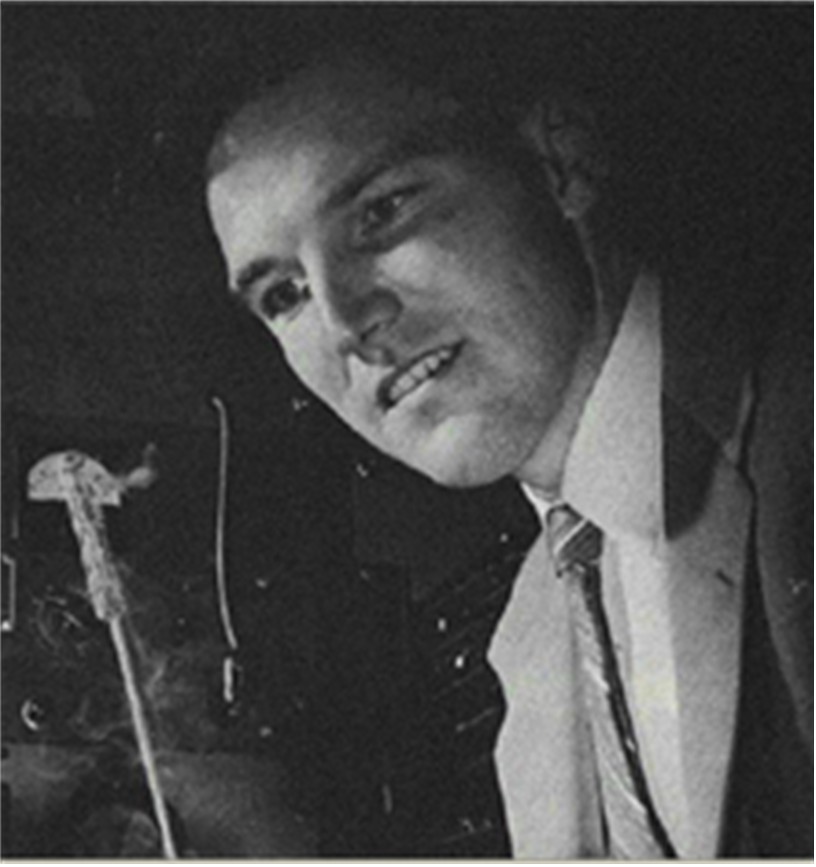-
(b.) -1927 April 25(d.)1959 May 21
Bio/Description
An electrical engineer and inventor of components for high-speed computing devices in the 1950s, he is best known for invention of the cryotron, a superconductive computer component that is operated in liquid helium at a temperature near absolute 0. Other inventions were ferroelectric memory, content addressable memory, non-destructive sensing of magnetic fields, and, development of writing printed circuits with a beam of electrons. The basic idea for the cryotron was entered into his MIT notebook on December 15, 1953. By 1955, he was building practical cryotron devices with niobium and tantalum. The cryotron was a great breakthrough in the size of electronic computer elements. In the next decade, cryotron research at other laboratories resulted in the invention of the Crowe Cell at IBM, the Josephson Junction, and the SQUID. Those inventions have today made possible the mapping of brain activity by magnetoencephalography. Despite the need for liquid helium, cryotrons were expected to make computers so small, that in 1957, Life Magazine displayed a full-page photograph of himwith a cryotron in one hand and a vacuum tube in the other. Another of his key inventions was a method of non-destructive sensing of magnetic materials. In the process of reading data from a typical magnetic core memory, the contents of the memory are erased, making it necessary to take additional time to re-write the data back into the magnetic storage. By design of 'quadrature sensing' of magnetic fields, the state of magnetism of the core may be read without alteration, thus eliminating the extra time required to re-write memory data.
He also invented recognition unit memory, called content addressable memory, it is a technique of storing and retrieving data in which there is no need to know the location of that data. Not only is there no need to query an index for the location of data, the inquiry for data is broadcast to all memory elements simultaneously; thus data retrieval time is independent of the size of the database. FeRAM was first built by him as part of his thesis work in 1952. In addition to its use as computer memory, ferroelectric materials can be used to build shift registers, logic, and amplifiers. He showed that a ferroelectric switch could be useful to perform memory addressing.
In late 1951 he proposed computer circuits that used neither vacuum tubes, nor the recently invented transistor. It is possible to make all computer logic circuits, including shift registers, counters, and accumulators using only magnetic cores, wire and diodes. Magnetic logic was used in the KW-26 cryptographic communications system, and in the BOGART computer. A professor at Massachusetts Institute of Technology, he earned his Doctor of Science from M.I.T. in 1958, and completed his S.M degree in 1952 at MIT. In his thesis work he demonstrated the principles of storing data in ferroelectric materials; the earliest demonstration of Ferroelectric memory, or FeRAM. This work also demonstrated that ferroelectric materials could be used as voltage controlled switch to address memory. By 1957, he began to place more emphasis on miniaturization of cryotron systems. The speed that cryotron devices could attain is greater as size of the device is reduced. He along with his students and researcher Kenneth R. Shoulders made great progress manufacturing thin-film cryotron integrated circuits in the laboratory at MIT. Developments included the creation of oxide layers as insulation and for mechanical strength by electron beam reduction of chemicals. This work, co-authored with Kenneth Shoulders, was published as "An Approach to Microminiature Printed Systems". It was presented in December, 1958 at the Eastern Joint Computer Conference in Philadelphia. In 1957 he was awarded the Browder J. Thompson award for engineers under the age of 30 by the Institute of Radio Engineers. Per a request by chairman Dr. Louis Ridenour, Solomon Kullback appointed him to the National Security Agency Scientific Advisory Board Panel on Electronics and Data Processing in December, 1958.
-
Date of Birth:
1927 April 25 -
Date of Death:
1959 May 21 -
Gender:
Male -
Noted For:
He is best known for his invention of the cryotron -
Category of Achievement:
-
More Info:


